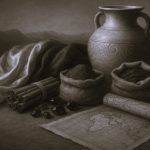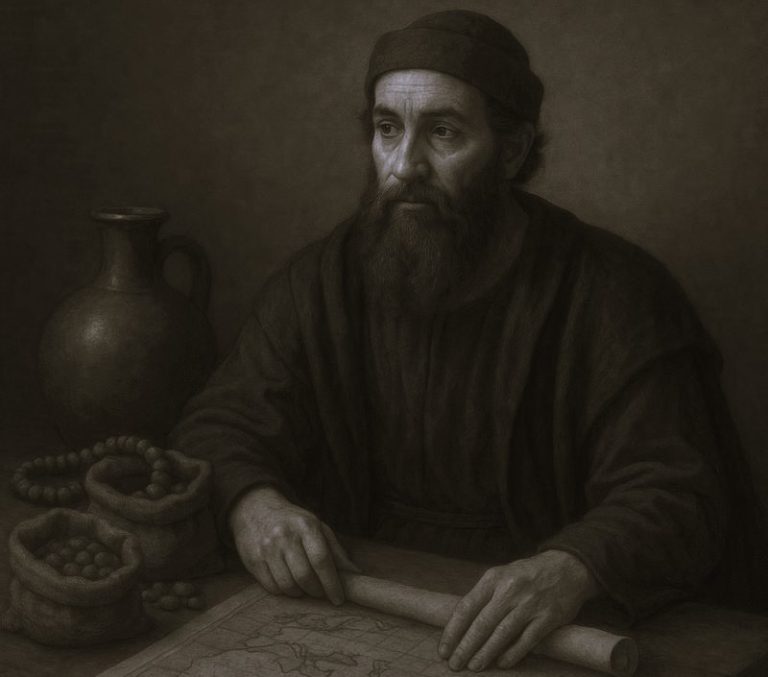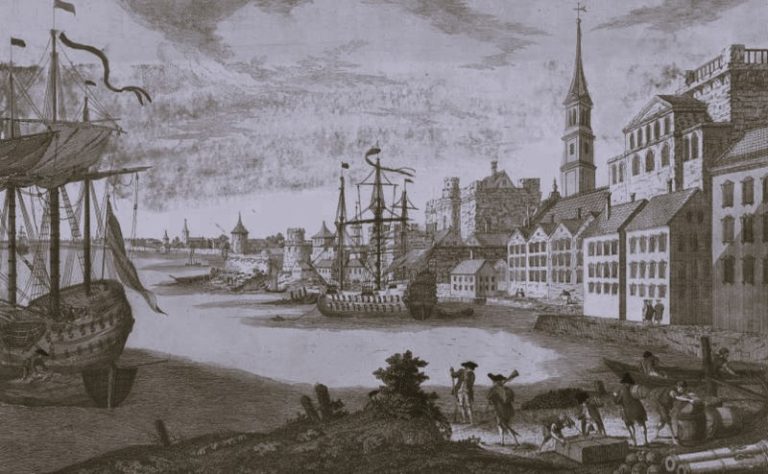

Throughout history, humans have developed various methods to record and store information, from oral traditions to digital media. Ancient civilizations, in particular, have left behind a wealth of information that has helped shape our understanding of their culture, history, and way of life. In this article, we will explore the ways in which ancient civilizations recorded their information, including oral tradition, pictographs, hieroglyphs, cuneiform writing, and paper and ink.
Studying how ancient civilizations recorded information is crucial for understanding their history, culture, and development. It allows us to gain insight into their language, religion, social hierarchy, political systems, and economy. Furthermore, it helps us to recognize the impact of these civilizations on modern society and how their legacy continues to shape our world today.
By examining the different methods used by ancient civilizations to record and store information, we can gain a better understanding of the diversity of human culture and the evolution of human communication. Additionally, we can appreciate the ingenuity of our ancestors in preserving their knowledge and the importance of preserving our own information for future generations.
Oral tradition as the earliest form of recording information
Oral tradition refers to the transmission of cultural knowledge, beliefs, and stories through spoken words from generation to generation. It is an ancient form of recording information that predates the invention of writing and was the primary means of communication for many ancient civilizations.
Many ancient civilizations relied on oral tradition to pass on their cultural knowledge, including the indigenous people of Australia, Africa, and the Americas. In Africa, for example, griots, or professional oral historians, were responsible for preserving and sharing the history, culture, and traditions of their people through storytelling. Similarly, Native American tribes in the United States relied on oral tradition to pass down their history, myths, and rituals.
One of the advantages of oral tradition is that it allowed for the preservation and transmission of cultural knowledge without the need for writing materials or literacy. It also fostered a strong sense of community and identity among ancient civilizations by reinforcing shared beliefs and values. However, oral tradition also had its limitations, as it was subject to human error and memory loss. Over time, stories and information could be altered or lost, leading to the loss of important cultural knowledge. Additionally, oral tradition was vulnerable to the destruction of the environment, such as natural disasters or forced migration, which could disrupt the transmission of information from one generation to the next.
Pictographs and Hieroglyphs
Pictographs and hieroglyphs are early forms of writing that use pictures or symbols to represent words, phrases, or ideas. Pictographs use simple pictures to convey meaning, while hieroglyphs use more complex symbols and images to convey a more extensive range of concepts.
Many ancient civilizations used pictographs and hieroglyphs to record information. The ancient Egyptians, for example, used hieroglyphs to record their history, religion, and administrative documents. The Mayans also used pictographs to record their history, religious beliefs, and astronomical observations. In China, the use of pictographs evolved into a system of ideographs, which represented abstract ideas or concepts rather than concrete objects.
One of the advantages of pictographs and hieroglyphics was their ability to convey complex ideas and concepts in a visual form. They could also be used to record a wide range of information, including historical events, religious beliefs, and astronomical observations. However, they were often challenging to decipher, requiring specialized knowledge and training to interpret correctly. Additionally, they could be time-consuming and labor-intensive to produce, as each symbol had to be carefully drawn or carved.
In conclusion, pictographs and hieroglyphics were important early forms of writing that enabled ancient civilizations to record and transmit information. While they had their limitations, they laid the foundation for the development of more complex writing systems that have allowed humans to record and preserve knowledge over time.
Cuneiform Writing
Cuneiform writing is one of the earliest forms of writing, developed by the Sumerians in ancient Mesopotamia around 3500 BCE. It uses wedge-shaped marks made on clay tablets to represent words and concepts.
Cuneiform writing was used by several ancient civilizations in Mesopotamia, including the Sumerians, Babylonians, and Assyrians. These civilizations used cuneiform writing to record a wide range of information, including religious texts, legal codes, administrative records, and literary works.
One of the advantages of cuneiform writing was its versatility. It allowed for the recording of a wide range of information, from religious texts and myths to business records and legal codes. Additionally, it was relatively easy to produce, requiring only a stylus and a clay tablet. However, cuneiform writing also had its limitations. It was time-consuming to produce, and the process of writing on clay tablets was labor-intensive. Furthermore, cuneiform writing required specialized knowledge and training to read and interpret, making it inaccessible to the majority of the population.
Another disadvantage of cuneiform writing was the fragility of the clay tablets. Over time, the tablets could break, crack, or deteriorate due to exposure to the elements. This made it challenging to preserve cuneiform tablets over long periods, and many have been lost or destroyed over time.
In conclusion, cuneiform writing was an important early form of writing that allowed ancient civilizations to record and preserve their knowledge and history. While it had its limitations, it laid the foundation for the development of more complex writing systems that have enabled humans to record and preserve knowledge over time. The study of cuneiform writing continues to provide insight into the culture and history of ancient Mesopotamia and highlights the importance of preserving ancient records and information for future generations.
Digital Revolution: Modern Methods of Recording and Storing Information
In recent years, the world has seen a digital revolution that has transformed the way we record and store information. Digital media has become an essential part of our daily lives, from social media platforms to cloud storage services. These sites are good examples of modern ways of recording information.
One of the most significant advantages of digital media is its accessibility. With a smartphone or computer and an internet connection, we can access vast amounts of information from anywhere in the world. This ease of access has made it possible to share information on a scale never before imagined, from sharing news and events with friends and family to collaborating with colleagues and experts around the globe.
Digital media has also made it easier to store and organize information. With cloud storage services like Dropbox, Google Drive, and iCloud, we can store documents, photos, and videos securely in the cloud, accessible from any device with an internet connection. This has made it possible to keep important information safe and easily accessible, without the need for physical storage space or paper records.
However, digital media also has its limitations. One of the most significant concerns is data security and privacy. With the vast amount of information being shared and stored digitally, there is a risk of data breaches and cyber attacks. Additionally, there is a risk that digital information may become obsolete, as technology advances and formats change.
In conclusion, the digital revolution has transformed the way we record and store information, providing us with new and innovative ways to capture and preserve knowledge. While digital media has its limitations and challenges, it has opened up new possibilities for sharing and accessing information on a scale never before imagined.
Challenges of Preserving Ancient Records and Information in the Modern Age
As we move further into the digital age, preserving ancient records and information has become a growing concern. The preservation of ancient records and information is essential for understanding the history and culture of past civilizations. However, the challenges of preserving ancient records in the modern age are significant.
One of the main challenges is the deterioration of ancient materials. Paper, parchment, and other materials used to record information in ancient times can easily deteriorate over time. Exposure to light, humidity, and temperature changes can cause paper and parchment to break down, leading to the loss of vital information. Additionally, ancient texts can be damaged or destroyed due to natural disasters or human activities such as war and conflict.
Another challenge is the translation of ancient languages. Many ancient records are written in languages that are no longer spoken or have evolved into modern languages. This makes it challenging for modern scholars to accurately translate and interpret ancient texts. Furthermore, many ancient texts were written using writing systems that are no longer in use, further complicating the process of translation and interpretation.
The third challenge is the need for digitization. In order to preserve ancient records and make them accessible to modern scholars, many texts and artifacts need to be digitized. Digitization allows for easy access and preservation of ancient records and information, but the process can be time-consuming and expensive.
Finally, there are also issues of ownership and repatriation. Many ancient records and artifacts are housed in museums and institutions around the world. However, there is growing pressure from indigenous groups and nations to repatriate these items and restore them to their rightful owners.
In conclusion, the challenges of preserving ancient records and information in the modern age are significant. However, the importance of preserving these records and information cannot be overstated. By working together, scholars, institutions, and governments can take steps to ensure that ancient records and information are preserved for future generations.
Conclusion
In this article, we explored the various ways in which ancient civilizations recorded their information. We discussed oral tradition, pictographs, hieroglyphs, cuneiform writing, and paper and ink. We also discussed modern methods of recording information, including digital media. Finally, we examined the challenges of preserving ancient records and information in the modern age.
The methods used by ancient civilizations to record information are significant because they provide insight into their culture, history, and development. They also demonstrate the ingenuity of our ancestors in preserving their knowledge and the importance of preserving our own information for future generations. There is much more to be discovered about the methods used by ancient civilizations to record and store information. Scholars can conduct further research into the ways in which these civilizations used their records and information, the impact of these records on modern society, and the challenges of preserving and accessing ancient records in the modern age. Additionally, scholars can explore the potential of emerging technologies, such as artificial intelligence and machine learning, to aid in the translation and interpretation of ancient records.






